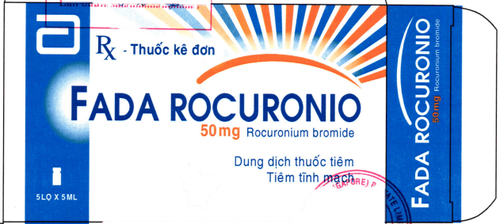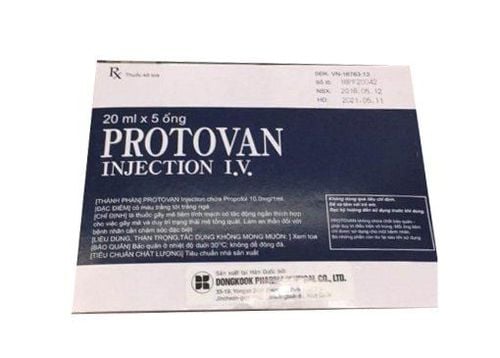This is an automatically translated article.
Suxamethonium is one of the depolarizing neuromuscular blocking agents and should be used by a specialist. Let's learn about the use of Suxathepharm in the following article.
1. What are the effects of Suxathepharm?
Suxathepharm has registration number VD-23787-15, manufactured at Thanh Hoa Pharmaceutical and Medical Supplies Joint Stock Company. Suxathepharm medicine contains the main ingredient is Suxamethonium chloride 100mg/2ml and is produced in the form of an injection solution. Suxathepharm is one of the depolarizing neuromuscular blocking agents that compete with acetylcholine for cholinergic receptors at the motor plate. Like acetylcholine, they bind to some of these receptors causing depolarization. Suxamethonium is used primarily to induce muscle relaxation during short procedures.
2. Indications for the use of Suxathepharm
Suxathepharm is indicated for use under a doctor's prescription in anesthesia, mechanical ventilation when intubating an endotracheal tube. Suxathepharm is widely used in some surgical and obstetric surgeries.
Besides, Suxathepharm is used to reduce the intensity of muscle contractions in electric shock or drug therapy.
3. Contraindications to the use of Suxathepharm
Suxamethonium is contraindicated for the following specific subjects:
People who are sensitive to Suxathepharm and any of its ingredients. Personal or family history of malignant hyperthermia, myopathy with elevated serum creatine kinase (CK/CPK) or angle-closure glaucoma; People with penetrating trauma to the eye; Patients with hereditary disorders of plasma cholinesterase; Patients with recent severe burns or multiple trauma, extensive musculoskeletal/trauma or cortical motor neuron damage, and hyperkalemia. Suxathepharm's contraindication is understood as an absolute contraindication, that is, for no reason why the contraindication is flexible enough to agree to use the drug.
4. Dosage and how to take Suxamethonium
4.1 How to use Suxamethonium Suxamethonium is usually put into the patient's body through intravenous injection. For children or certain subjects with difficult intravenous administration, Suxamethonium may be indicated for deep intramuscular injection, high in the deltoid muscle.
Care should be taken when using Suxamethonium with alcohol, tobacco, alcoholic or fermented beverages. These agents may alter the composition of Suxamethonium.
4.2 Dosage of Suxamethonium Adults:
For short surgery: Intravenous injection of 0.6mg (about 0.3 - 1.1mg/kg), injected in 10 - 30 seconds. May be repeated, dose dependent on the response of the first dose of Suxamethonium. Or IM 3 to 4 mg/kg, not to exceed a total dose of 150 mg. For prolonged surgery: Intravenous dose from 0.6mg - 1.1mg/kg. Subsequent doses vary from patient to patient, in order to maintain the required degree of muscle relaxation. Children:
For intubation: Intramuscular dose up to 2.5mg/kg, not to exceed a total dose of 150mg. Intravenous injection 1-2 mg/kg. A booster may be given if necessary, the booster dose based on the patient's response to the first dose.
5. Undesirable effects of Suxamethonium
Suxamethonium side effects occur mainly as excessive pharmacological effects of the drug. Patients may experience some side effects such as:
Common: Pain and stiffness after surgery, possibly due to muscle twitching occurring immediately after injection, and increased intraocular pressure. Uncommon: Arrhythmia, bradycardia or tachycardia, salivary gland enlargement and increased gastric pressure. Rare: Anaphylaxis, circulatory failure, hypersensitivity, edema, erythema, malignant hyperthermia, bronchospasm, erythema, pruritus, rash, myoglobinuria, hyperkalemia, increased intracranial pressure skull, increased or decreased blood pressure. Usually, the side effects mentioned above will disappear when Suxathepharm is stopped. You can immediately inform your doctor if you suspect any side effects of Suxathepharm.
6. Notes and cautions when using Suxathepharm
Objects to note before taking Suxathepharm include:
Elderly people; Pregnant women or women who are breastfeeding; Children under 15 years old; People who are experiencing liver failure, kidney failure; People with myasthenia gravis, hepatic coma or stomach ulcers.
7. Overdose of Suxathepharm and how to handle it
Manifestations of overdosage with Suxathepharm include: Prolonged neuromuscular blockade, skeletal muscle weakness, decreased respiratory reserve, decreased tidal volume, apnea beyond surgery or anesthesia.Treatment instructions:
Maintain adequate respiration and give artificial respiration or give mechanical ventilation until recovery of normal breathing is guaranteed for the patient. In the case of non-depolarizing neuromuscular blockade, it is gradually converted to neuromuscular blockade, which can be neutralized by small doses of anticholinesterase drugs. Atropin used before or at the same time as an antagonist has the effect of counteracting its cholinergic side effects. Patients should be closely monitored for at least 1 hour after the non-depolarizing neuromuscular blockade has worn off, with the aim of avoiding muscle relaxation.
Above is the information shared about ingredients, dosage, usage and notes when treating diseases with Suxathepharm. However, the information shared above is for reference only, please use Suxathepharm under the guidance of your treating doctor.
Please dial HOTLINE for more information or register for an appointment HERE. Download MyVinmec app to make appointments faster and to manage your bookings easily.













